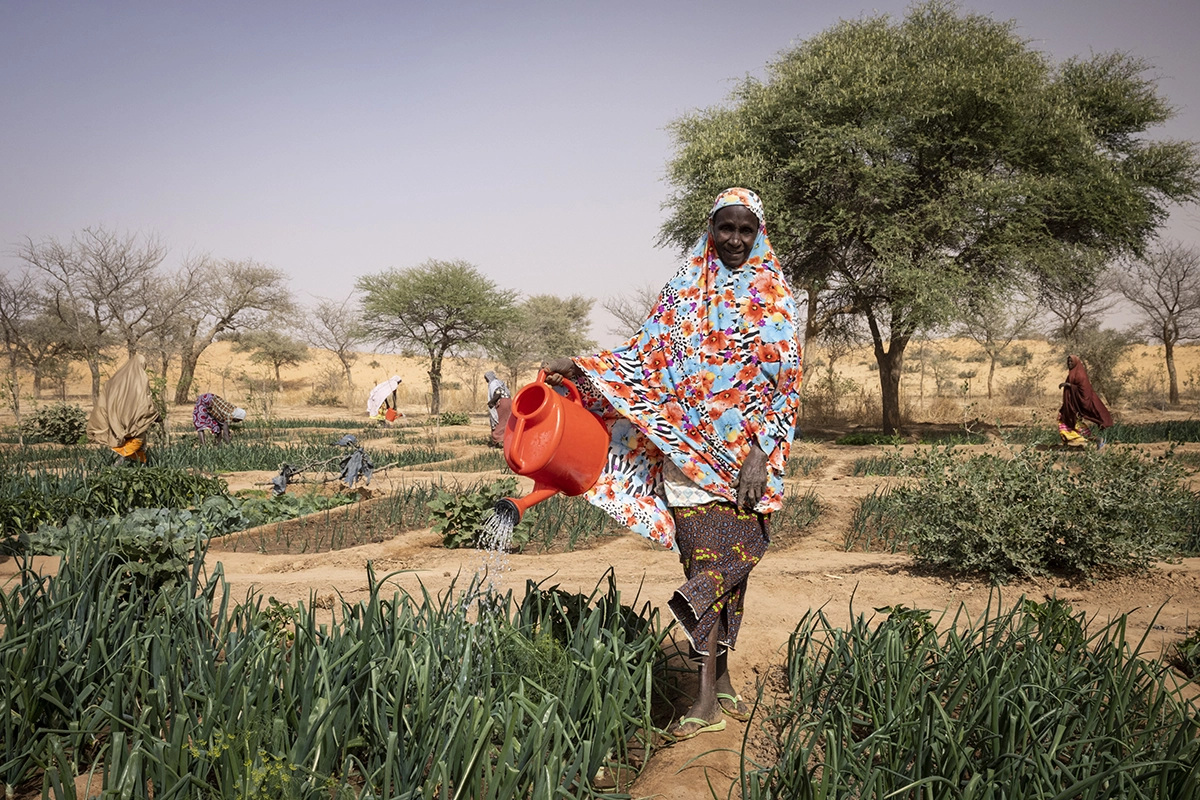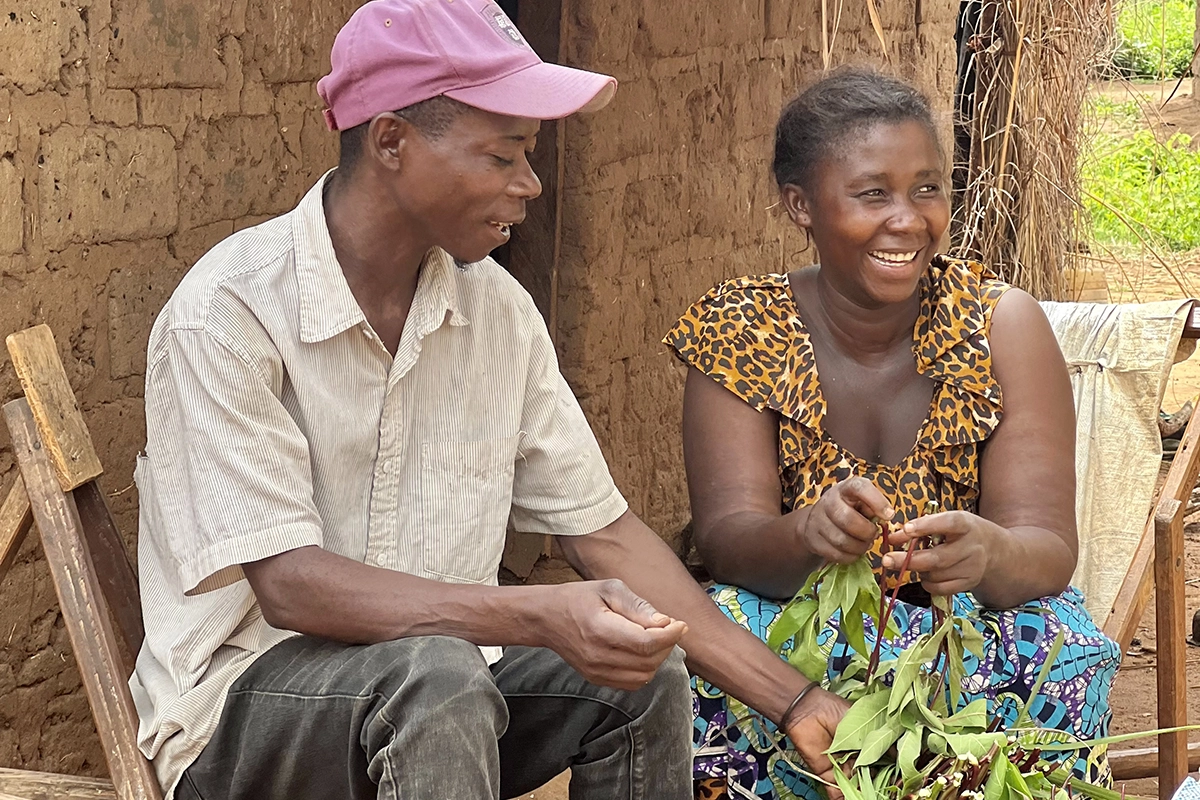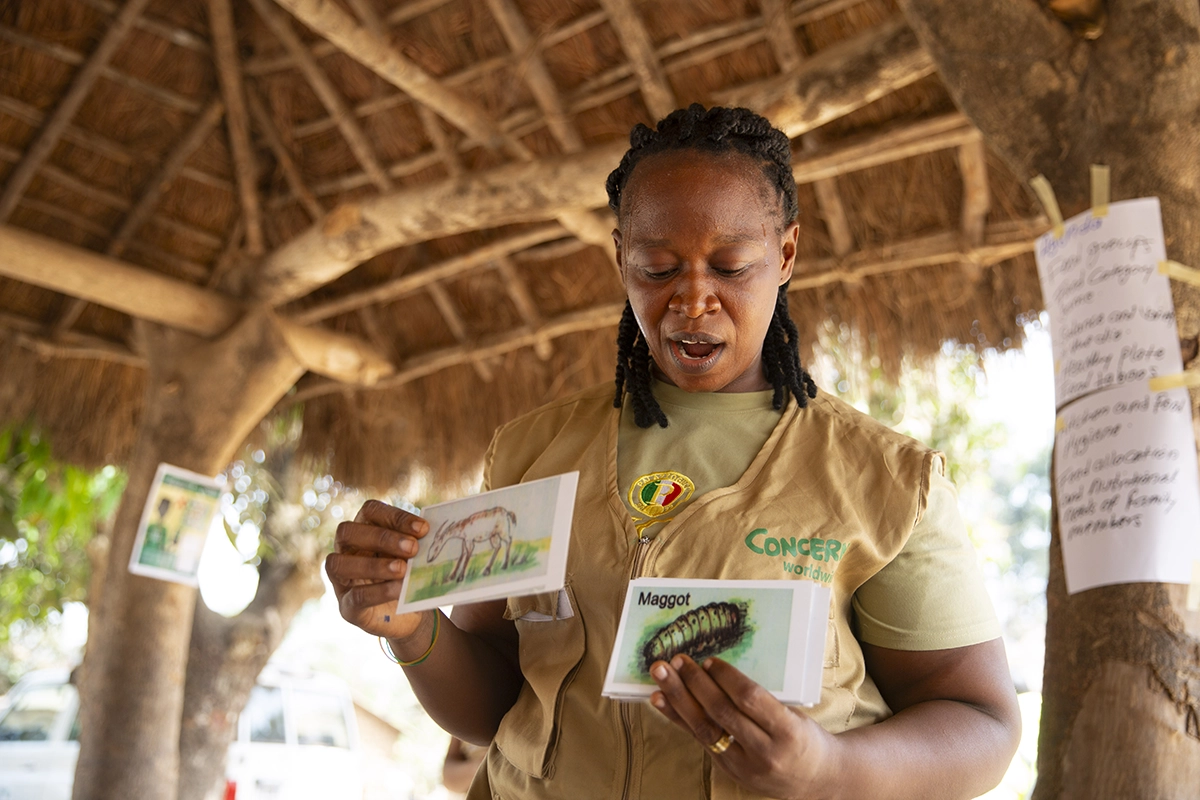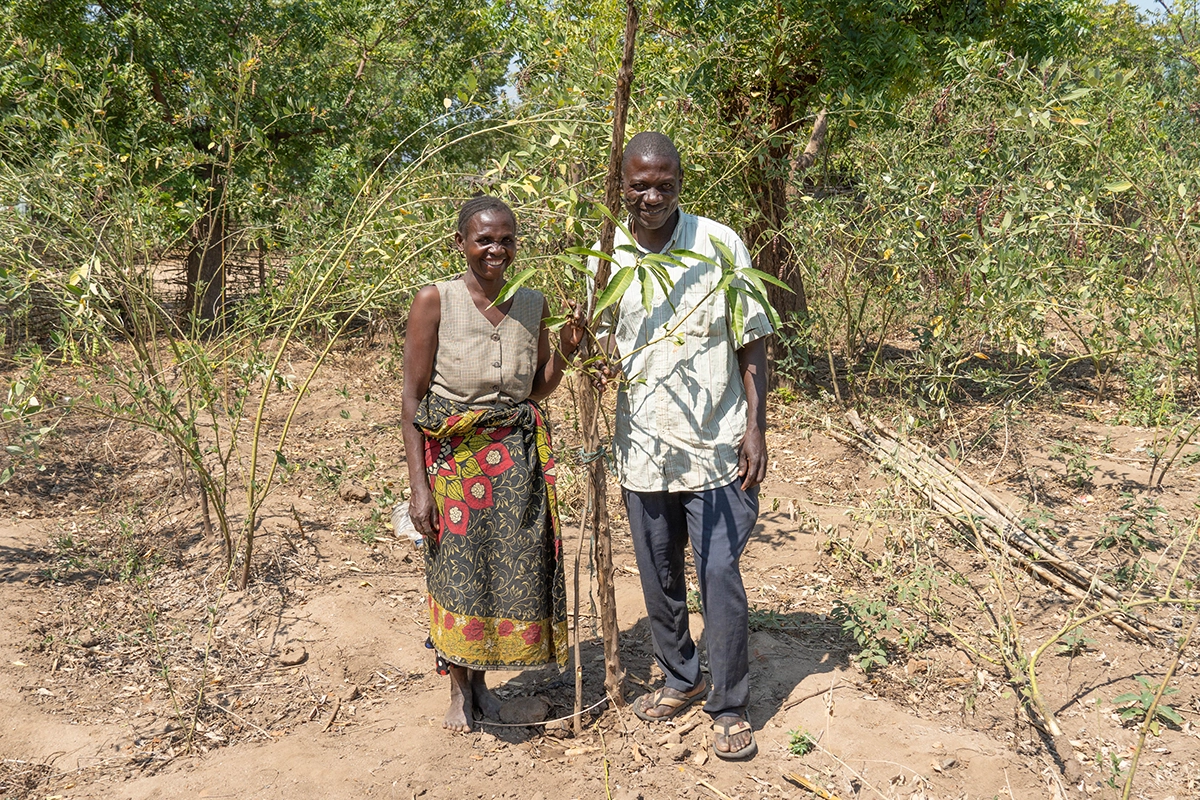Project Profile
Global Hunger Index
Learn more about the Global Hunger Index and download the 2024 report.
Read MoreThis essay is adapted from the 2024 Global Hunger Index essay, “Gender Justice, Climate Resilience, and Food and Nutrition Security” by Nitya Rao, Siera Vercillo, and Gertrude Dzifa Torvikey.
Despite decades of galvanizing rhetoric about the need to ensure equal rights and opportunities for men and women, we still live in an age of severe gender inequality (one that’s even more challenging for trans men and women and people who are nonbinary, nonconforming, or any other expression of gender identity outside of the binary).
The 2024 Global Gender Gap Index places our global gender equality score at 68.5% — a failing grade that in many countries is even wider. The effects of this gender gap cascade throughout women’s lives, and carry stark implications for both the global hunger crisis and climate crisis for all genders. The gender gap in food security is as high as 19 percentage points in some countries, and the situation is especially severe for women in countries affected by conflict. However, even in peacetime, hunger has a disproportionate effect on women and girls. So does climate change.
This year’s Global Hunger Index shows that, in order to meaningfully address the current hunger crisis, we have to look at one key intersectional issue: gender equality, climate justice, and the hunger crisis. Here’s how that works.

In many of the world’s hungriest countries, gender inequality, food insecurity, and climate change converge, placing families, communities, and entire nations under extreme stress.
Women and girls are usually hit hardest by this convergence. Food systems tend to discriminate against women by design, with many policies and approaches not addressing the underlying power imbalance between men and women — especially in countries that rely heavily on agriculture for their economies. Women are often forced to work the land and care for families without pay, safe work environments, or the ability to own the land.
Climate change also has a disproportionate effect on women. In a report published earlier this year, the Food and Agriculture Organization notes that heat waves and floods widen the gap not only between people above and below the poverty line, but also between male- and female-headed households. One study of 24 low- and middle-income countries revealed that, if global temperatures rise by one more degree Celsius, female-headed households are projected to lose 34% more of their income compared to male-headed households. Women face increasing work burdens as a result of climate change, including traveling further to fetch water and having to take on multiple livelihoods to survive.

Poverty exists at the intersection of risk and inequality, especially gender inequality. Gender justice — that is, equity between people of all genders in all spheres of life — is critical to achieving both climate and food justice. Building true, sustainable gender equity will create a knock-on effect for many other forms of inequality.
For gender justice to be meaningful and sustainable, we need to focus on three interconnected elements: recognition, redistribution, and representation. This means:
Recognition of multiple and intersecting discriminatory norms, values, perceptions, and differences. Also the recognition of different people’s varied needs, vulnerabilities, and opportunities. In this case, we also need to recognize women’s environmental knowledge and values.
Redistribution of public resources, especially social protection, land, employment opportunities, inputs, and technologies in a way that creates equality of outcomes, not equality of inputs. We also need to improve access to credit, education, and skill development services. Knowledge, after all, is power.
Representation of women and other marginalized groups at the political level, as well as other key decision-making levels. This is especially true for communities affected by climate change and food insecurity.

All of this is, of course, easier said than done. To effectively make recognition, redistribution, and representation work at a meaningful level and scale, reforms need to happen across the board. This means everything from individual changes in attitude around social and cultural norms to entire systems and governments.
There are many structural inequalities that, if left unchecked, will still perpetuate inequities even if women have greater access to resources. These issues include class dynamics, rising income inequality, corporate control over food systems, and a lack of basic, quality social services and safety nets.
Without this approach, however, we run a high risk that even policies and interventions that include women or focus on giving them access to resources could result in a backlash. Recent studies have shown that, in many cases, when women are able to increase their profits, their livelihoods are then taken over by men. Even hyperlocal shifts need to be underpinned by universal social protections and macroeconomic measures (such as tax and trade policies) that support people living in the most vulnerable circumstances.

The good news is that many communities and countries are already aware of this intersectional issue and are taking steps to address it, with demonstrable early success. The better news is that there is a wealth of resources available to other governments willing to do the same.
Various organizations have developed guidelines to help point the way towards gender equality in both food systems and climate action, including the Voluntary Guidelines on Gender Equality and Women’s and Girls’ Empowerment (adopted by the Committee on World Food Security). These guidelines recommend governments use affirmative action to promote women in leadership roles in both the public and private sectors, support women’s rights organizations and networks, empower women through education, and support their land tenure and use rights.
Education has been recognized for over a decade by UNESCO as a key strategy for changing discriminatory gender norms, and all of these actions are especially important for Indigenous women, as well as those who have other mitigating circumstances (including pregnancy, being widowed, divorced, or single parents). While there is more work to be done — especially in addressing the prevalence of gender-based violence — these initial guidelines have been used in the last three years by 127 countries. Of these, 108 have submitted voluntary progress reports that present bold measures to address these complex inequalities.

Many of these reforms and initiatives come down to finding a new system of farming that includes climate justice, gender justice, and market justice factors. This is where agroecology can play a large role. Agroecology encourages community-led dialogue and education on social inequality. Farmers share knowledge among themselves (often with an “each one teach one” approach), which encourages experimentation, increases soil and harvest quality, and reduces local dependence on global agricultural markets.
According to two separate studies in Malawi conducted in 2017 and 2021, this is especially helpful for gender justice. Women experience greater autonomy and authority in making decisions for their family as well as fairer labor distribution both at work and at home. In tandem with this, improvements in childhood nutrition, dietary diversity, and overall family health were reported.
Gender justice holds the promise of transformative change. We can take hope from and build on the many interventions around the world that are currently working to achieve sustainable and equitable outcomes and foster a just, food-secure, and resilient world.
This is just the tip of the iceberg. Get examples, data, sources, and more by with the full essay — written by Nitya Rao (University of East Anglia), Siera Vercillo (Wageningen University), and Gertrude Dzifa Torvikey (University of Ghana) — for free by downloading the 2024 Global Hunger Index, now available from Concern Worldwide and Welthungerhilfe.